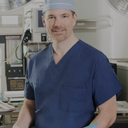I am planning to fly over to Korea on June 16. I've scheduled to get my Full Incision Upper Blephoraplasty on June 18. While I am there, in 2 1/2 weeks I will be flying to Jeju Island (1 hour flight), then back to Korea, then I will be flying to Tokyo on July 14, then back to Virginia on the same day (10 hour flight). I'm a little concerned about the amount of stops I am making by plane after my surgery. Is it enough time for my eyelids to heal before I get on my plane?
Answers (5)
From board-certified doctors and trusted medical professionals
Dr. Suzanne Kim Doud Galli, MD, PhD, FACS
Board Certified Facial Plastic Surgeon
Answer
More Eyelid Surgery Questions
See all Eyelid Surgery Q&AWE SEND PRETTY
EMAILS
What’s trending? Who’s turning heads? Which TikTok myths need busting? We’ve got you. No fluff, no gatekeeping—just real talk. Get our free, unfiltered newsletter.

